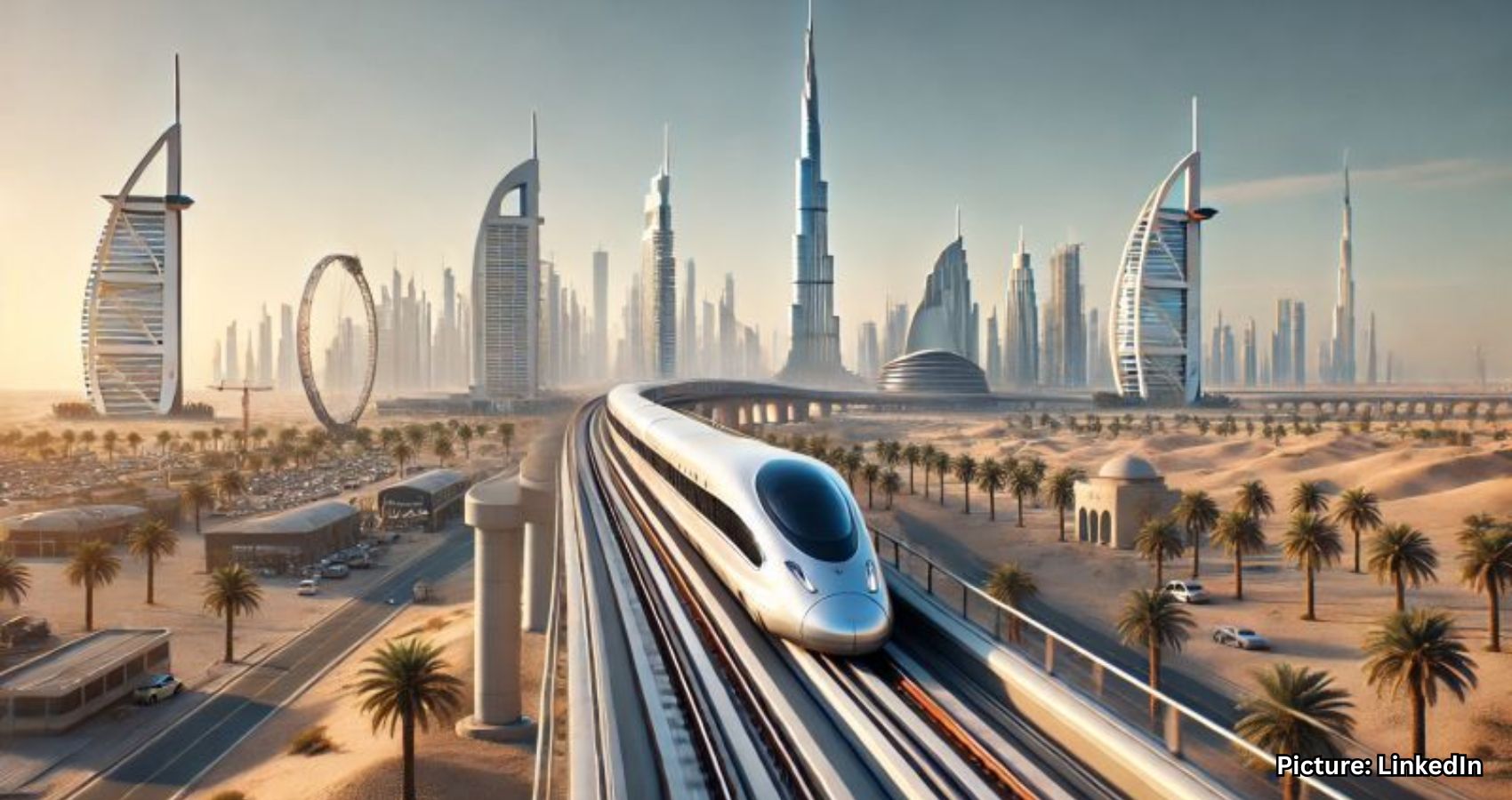High-speed train systems are becoming a global phenomenon, with rapid developments underway across continents—from Europe to North Africa and East Asia. Now, the Middle East is entering the scene with an ambitious new high-speed rail service that will link two of its most prominent cities: Abu Dhabi and Dubai.
The announcement came during a ceremonial event held at the Al Faya Depot in Abu Dhabi. At the heart of this development is Etihad Rail, the national railway company, which is spearheading the creation of a high-speed train connecting the Emirati capital with Dubai.
Already recognized as one of the most advanced cities in the world in terms of public transportation, Abu Dhabi is set to enhance its connectivity even further. This new train service is expected to significantly ease the commute between the two cities, creating a smoother experience for both residents and tourists.
One of the most striking aspects of this upcoming service is its speed. The train is designed to travel at a maximum speed of 350 kilometers per hour. With this, the journey time between Abu Dhabi and Dubai will be cut down to a mere 30 minutes. This dramatic reduction in travel time is expected to make daily life more efficient and convenient for many, especially for those who frequently travel between the two cities for work or leisure.
The rail project is not just about speed and convenience; it also plays a critical role in the United Arab Emirates’ broader sustainability goals. It is closely aligned with the UAE’s Net Zero 2050 strategy, a national plan aimed at achieving carbon neutrality by mid-century. A statement from the official press release underlined the environmental benefits, explaining that the new railway is expected to contribute significantly to a greener and more sustainable mode of transportation.
Additionally, the development of the high-speed service is being viewed as a major step forward for the UAE’s global standing in the realm of sustainable infrastructure. The release expressed optimism that the project would enhance the nation’s international competitiveness. In the words of the official statement, the hope is that this development will “bolster the UAE’s competitiveness internationally when it comes to sustainable transport.”
Economically, the implications of this infrastructure advancement are equally compelling. Analysts and government officials are forecasting significant financial benefits. One projection suggests that the railway will contribute a remarkable AED145 billion to the country’s Gross Domestic Product (GDP) over the next 50 years. That’s an eye-opening one hundred and forty-five billion dirhams in added economic value.
But this high-speed line is just one part of a broader plan to expand and modernize the UAE’s public transport infrastructure. During the same ceremony, officials also unveiled the country’s first fleet of passenger trains. These trains are set to operate at speeds of up to 200 kilometers per hour, catering to longer distances within the country and possibly the broader Gulf region.
As if that weren’t enough, the event also marked the introduction of the UAE’s first four passenger rail stations. These new stations will be located in Abu Dhabi, Dubai, Sharjah, and Fujairah. Importantly, they’ve been designed to seamlessly integrate with existing metro and bus networks. This integrated approach reflects a growing emphasis on making public transport more efficient, connected, and accessible to the population at large.
The ceremony at Al Faya Depot thus served as more than just an announcement of a new train. It showcased a holistic vision for the future of mobility in the UAE. The inclusion of stations in different emirates also points to a long-term goal of fostering national unity and regional development, with rail travel acting as a catalyst for both.
With work now moving forward, residents and stakeholders alike are looking to the future with anticipation. Once operational, the high-speed train is expected to transform the way people travel between Abu Dhabi and Dubai. For daily commuters, it means spending less time on the road and more time at work or home. For tourists, it offers a faster, more scenic, and eco-friendly way to explore the region.
All of this is in line with the UAE’s broader ambitions to position itself as a global leader in innovation, sustainability, and infrastructure development. The unveiling of these projects reflects a national commitment to long-term progress that is both economically and environmentally responsible.
In summary, the UAE’s new high-speed rail link between Abu Dhabi and Dubai is much more than just a transportation upgrade. It’s a symbol of the country’s forward-thinking vision, one that encompasses environmental sustainability, economic growth, and improved quality of life for its citizens and visitors alike. With trains expected to zip along at 350 kilometers per hour and reach their destination in just 30 minutes, the project promises to be a game-changer for the region.
As the official press release noted, the initiative will “vastly improve connectivity between Abu Dhabi and Dubai” while also reinforcing the UAE’s commitment to a more sustainable future. Furthermore, projections indicate that the project will “improve the country’s GDP by a staggering AED145 billion over the next five decades.”
During the event, attendees were also introduced to “the UAE’s first passenger train fleet,” capable of speeds of up to 200 kilometers per hour. Additionally, the presentation of “the country’s first four passenger rail stations in Abu Dhabi, Dubai, Sharjah and Fujairah” highlighted how these stations have been “designed to integrate with metro and bus services.”
By combining rapid transit with environmentally conscious goals and substantial economic foresight, the UAE is laying down the tracks—both literal and figurative—for a more connected and sustainable future.

